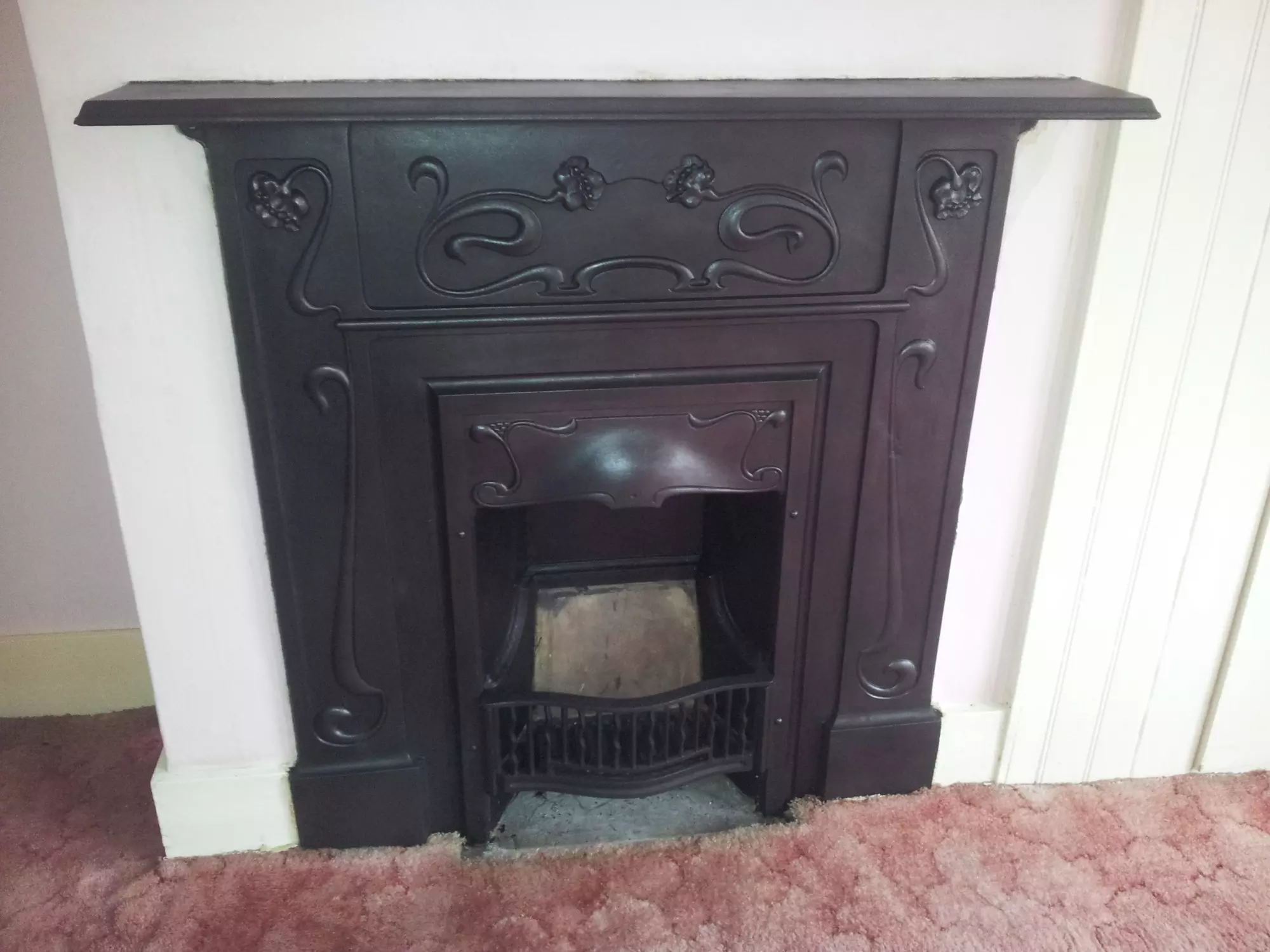Are you wondering how old your antique fireplace is? Our experts explain how to date a fireplace. Read more about antique fireplaces.
How do I know if my fireplace is original?
There are a few ways of telling whether your antique fireplace is an original piece or a reproduction. One of the first things to check what the screws in the rear of the fireplace look like. If these screws appear new, then this suggests that the fireplace is not original or that some changes have been made.
The next thing to look for is the detailing on the fireplace itself. If the detailing, such as floral patterns or banners, appears clear and distinct, you have an original fireplace; reproduction fireplaces are often formed in moulds where some details can be lost or malformed. The final thing to look for when assessing whether your fireplace is original or not is the brand name. This brand name will be on the rear of the fireplace and, for original pieces, this name will be indented.
Different antique fireplaces from different periods have specific discerning characteristics. Here we have detailed a few of them to know what to look for when looking for original fireplaces.
Tudor (1485 -1603)
The invention of enclosed hearths for the Tudor house allowed people to install fireplaces on the upper floors of buildings. These are effortless pieces, often made of plain, beige stone with scant decoration.
William and Mary (1689 -1702)
After the Glorious Revolution, interior design in England came under the influence of Dutch styles. Heavy, dark painted materials were popular with flat planes accentuated by intricate carvings that dominated the fashion.
Queen Anne style (1702 -1715)
Moving sharply away from the Dutch fireplace designs popular with her predecessors, fireplace designs during Queen Anne's reign is where we find more quintessential English designs. Simple and elegant, with no carved detail or patterning whatsoever, Queen Anne style fireplaces have stood the test of time as graceful and cultivated fireplace design. Simple marble was the favourite material to create these elegant fire surrounds.
Georgian (1714 -1830)
A more gregarious, flamboyant time brought with it grander styles of fireplaces. Far from the previous fashion of simplicity, Georgian fireplaces are supposed to draw the eye. Large fire surrounds, mantels and pillars with decorative medallions, elegant fire baskets, and cast iron fireplace grates typified the Georgian style.
Regency (1811
Again shifting towards simplicity, typifying a more austere time in history, Regency fireplaces did away with much of the Georgian style's grand ceremony. Simple, smooth lines and gentle curves are typical features of fireplaces from this era.
William IV (1830-1837)
While still maintaining the austere nature of Regency styles, continuing the use of cast iron grates and clean lines, Willian IV style fireplaces did bring back some level of detail. It is possible to find entire mantels produced from cast iron sheets, with floral patterns or bows characterising this iconic style.
Victorian(1837
Victorian fireplaces are probably the most famous for their grand, intricate and compact designs. Again sticking with the versatile cast iron fixings, Victorian fireplace designs blended many of the previous styles. You will find cast iron, marble, tiles, simplistic and elegant carving, and detail mixed to create an inimitable fireplace style.
Art Nouveau/Edwardian (late 19th century)
Building upon the popular Victorian style, Art Nouveau/Edwardian fireplaces are distinguished from the rest due to their intricate and highly decorative tiling. Either side of the cast-iron enclosed fire grate is tiled, with these decorative tiles contained intricate patterns or beautiful floral motifs that pushed the Victorian style even further.
Art Deco (early 20th century)
A radical shift from previous styles, Art Deco, introduced highly stylistic geometric looks into the fireplace design. The curved lines and floral motifs of earlier periods were gone. Straight, clean lines and regular shapes became the desired look for Art Deco fireplaces. Tiles, stone and wooden fire surround, remained popular material choices, however.
Modernist
Modern fireplaces come in all shapes and sizes. However, certain modern trends have pushed the idea of simplicity to the extreme, with fireplaces coming to resemble simple gaps or openings cut out from walls with flames in them. This sleek look allows the fireplace to become part of the room; neither draw too much attention nor direct it elsewhere.
How much does it cost to restore a fireplace?
In the post-war years, interior design trends meant that many original Victorian or Regency fireplaces were replaced or hidden away. However, in recent years, more and more people have been seeking out antique fireplaces for their houses. Fireplaces may act as brilliant centrepieces for a room and offer a great range of decorative choices. But given that installing a fireplace is a complex task, how much will it cost?
The first thing you may need to do is arrange for a professional expert to check both the flue and the chimney, ensuring that they are operational and extract smoke from the fire correctly. You may need to repair the flue if there are any cracks, openings or wooden components found in it.
After this, you should have your chimney swept to clear any debris, blockages or bird's nests.
On average, this work will cost you around
Do you have an antique fireplace that you want to restore? If you want to find out more about how to date a fireplace, contact our expert today. We provide antique fireplace restoration in Hastings and East Sussex.
